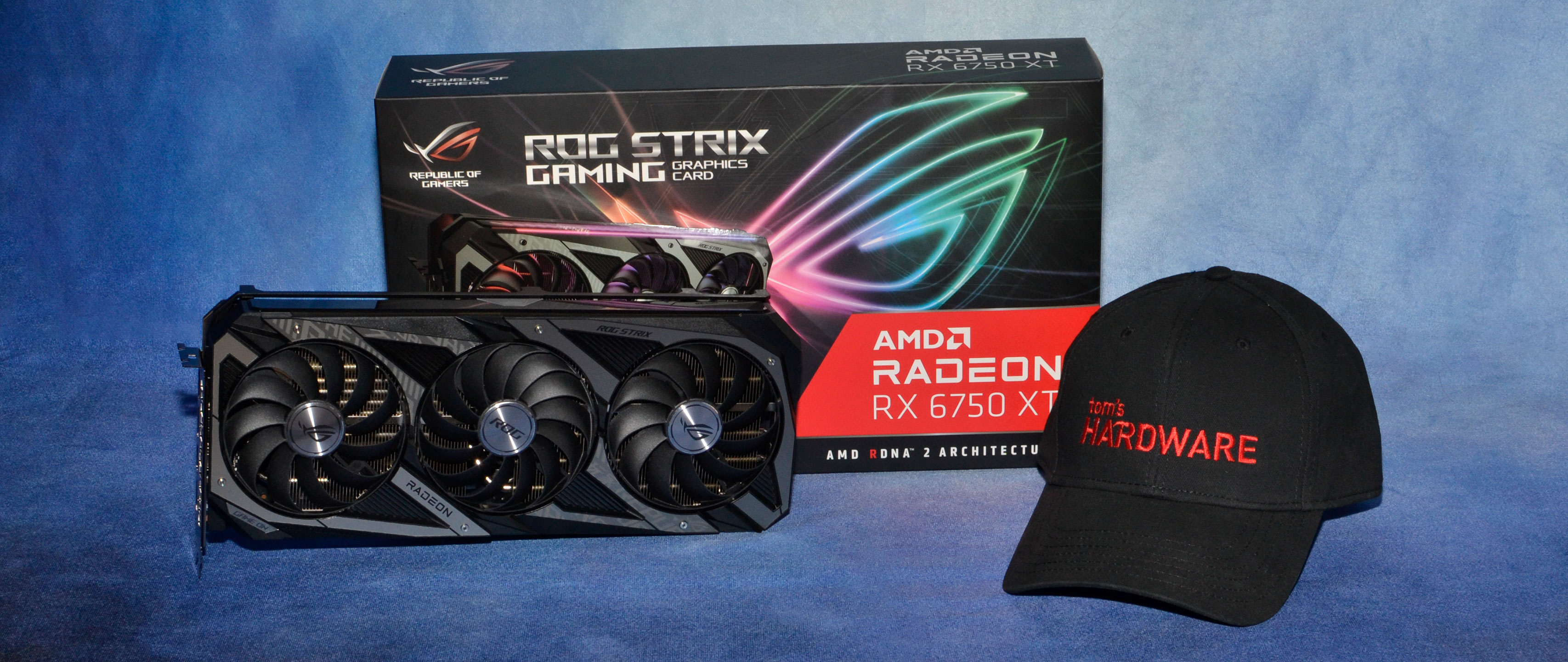Why you can trust Tom's Hardware
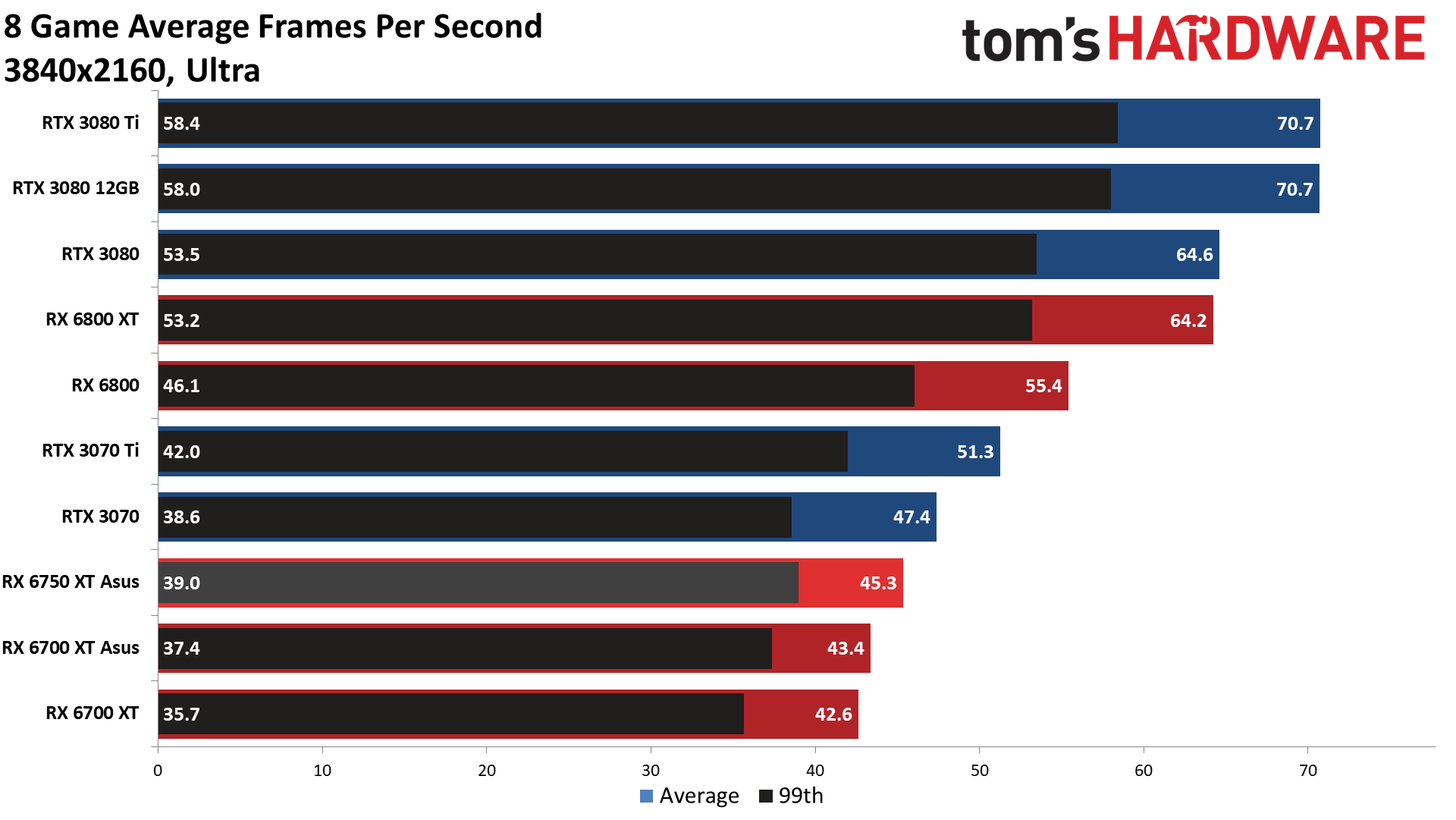
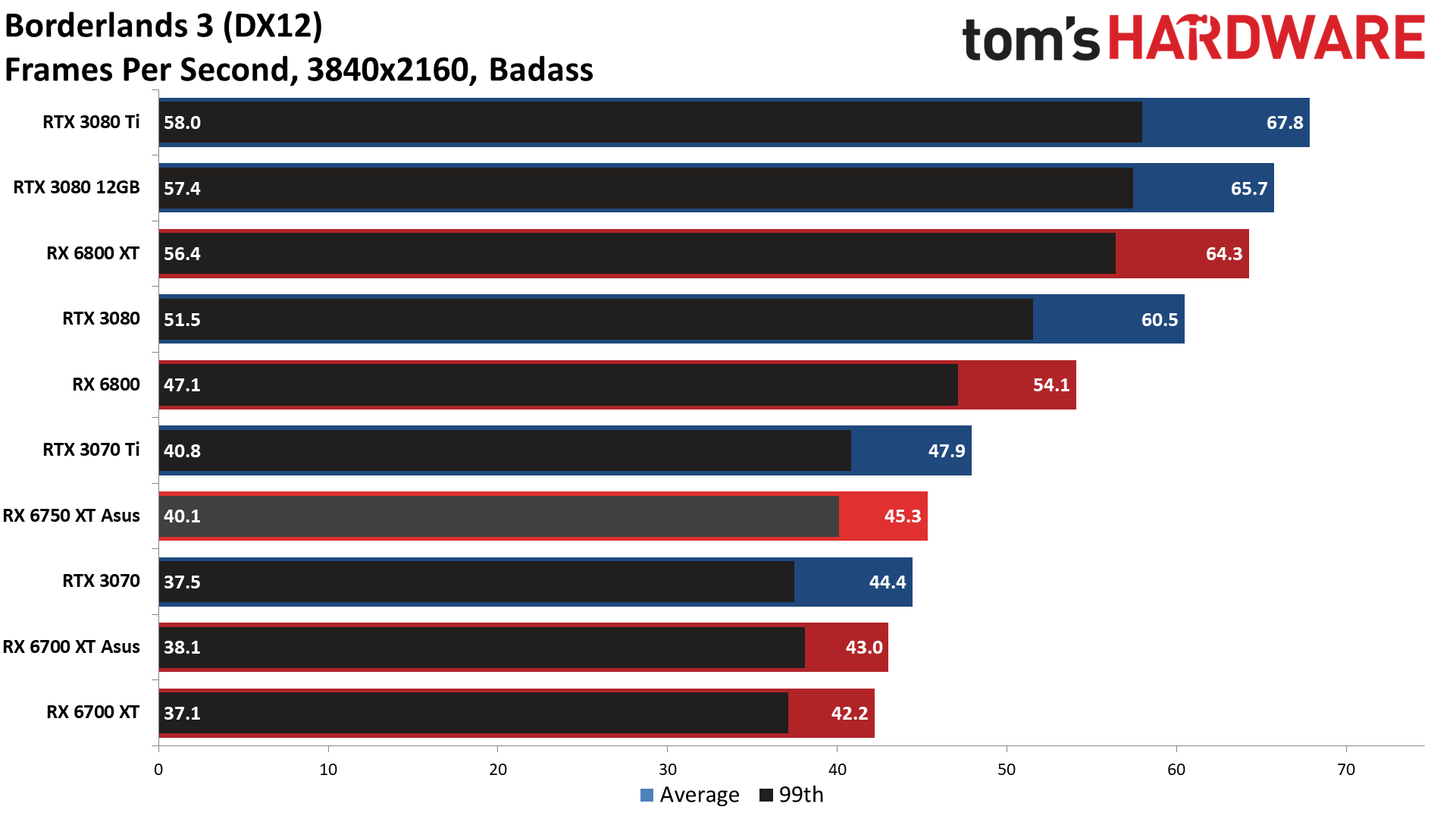
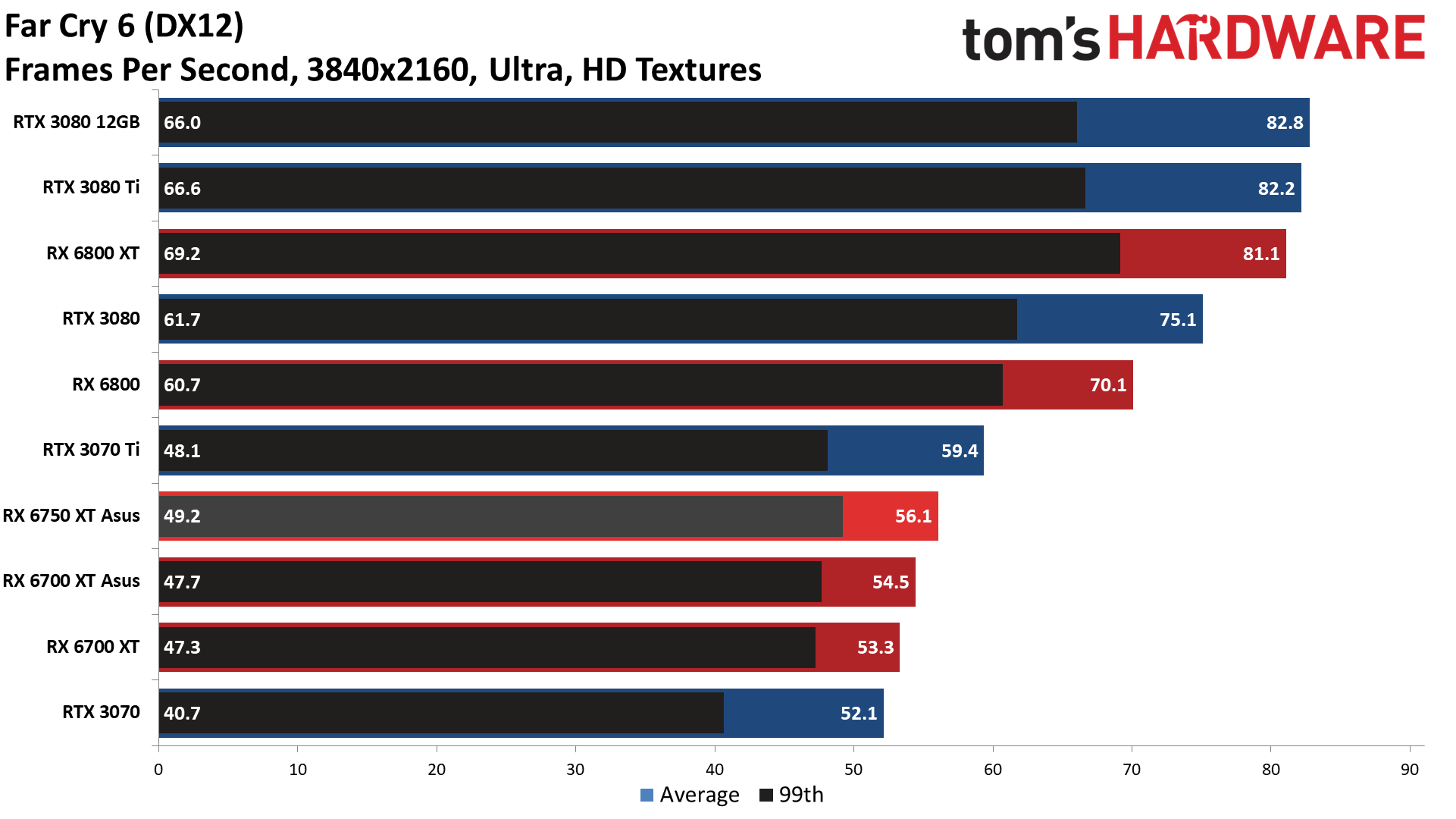
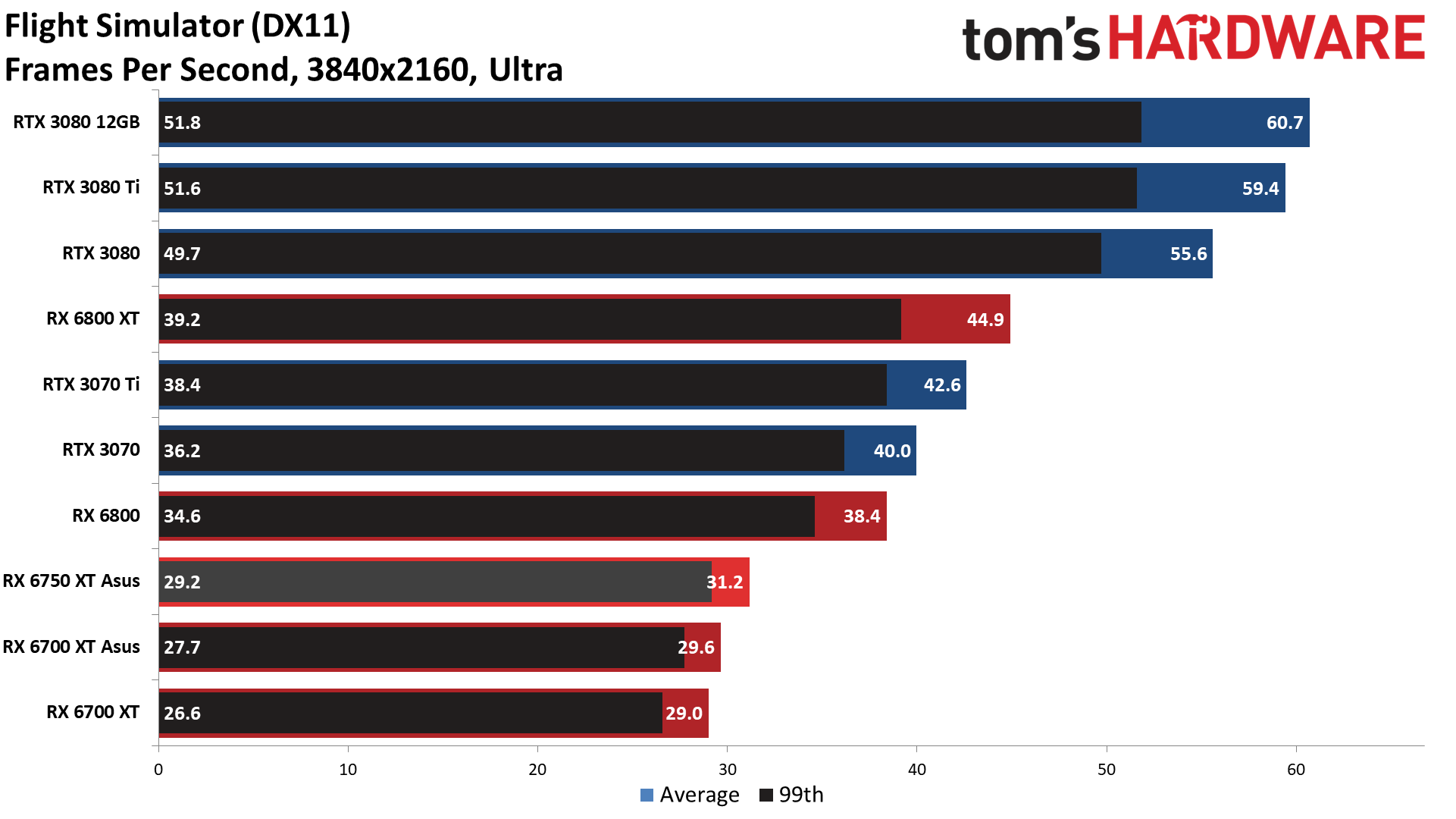
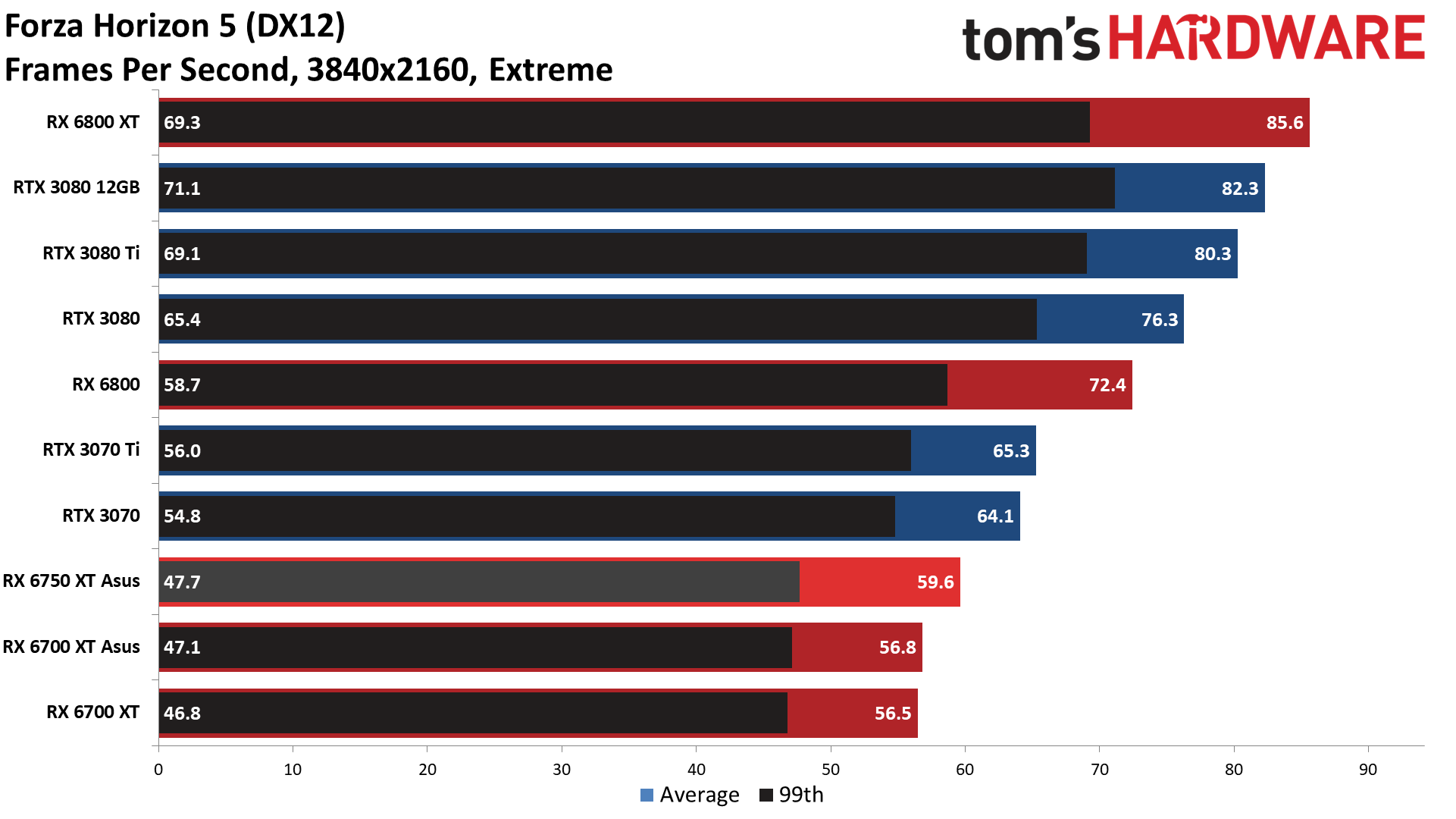
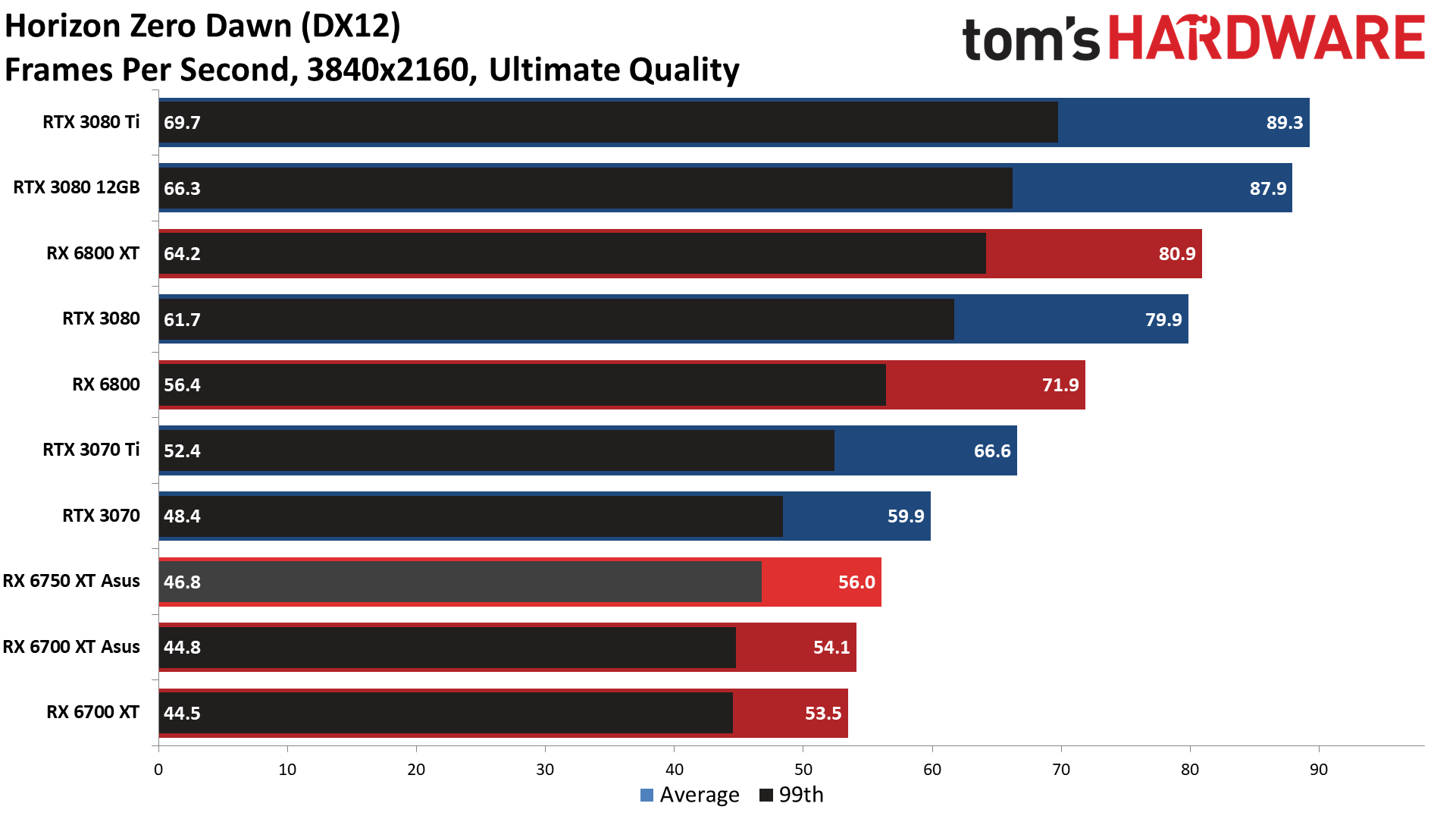
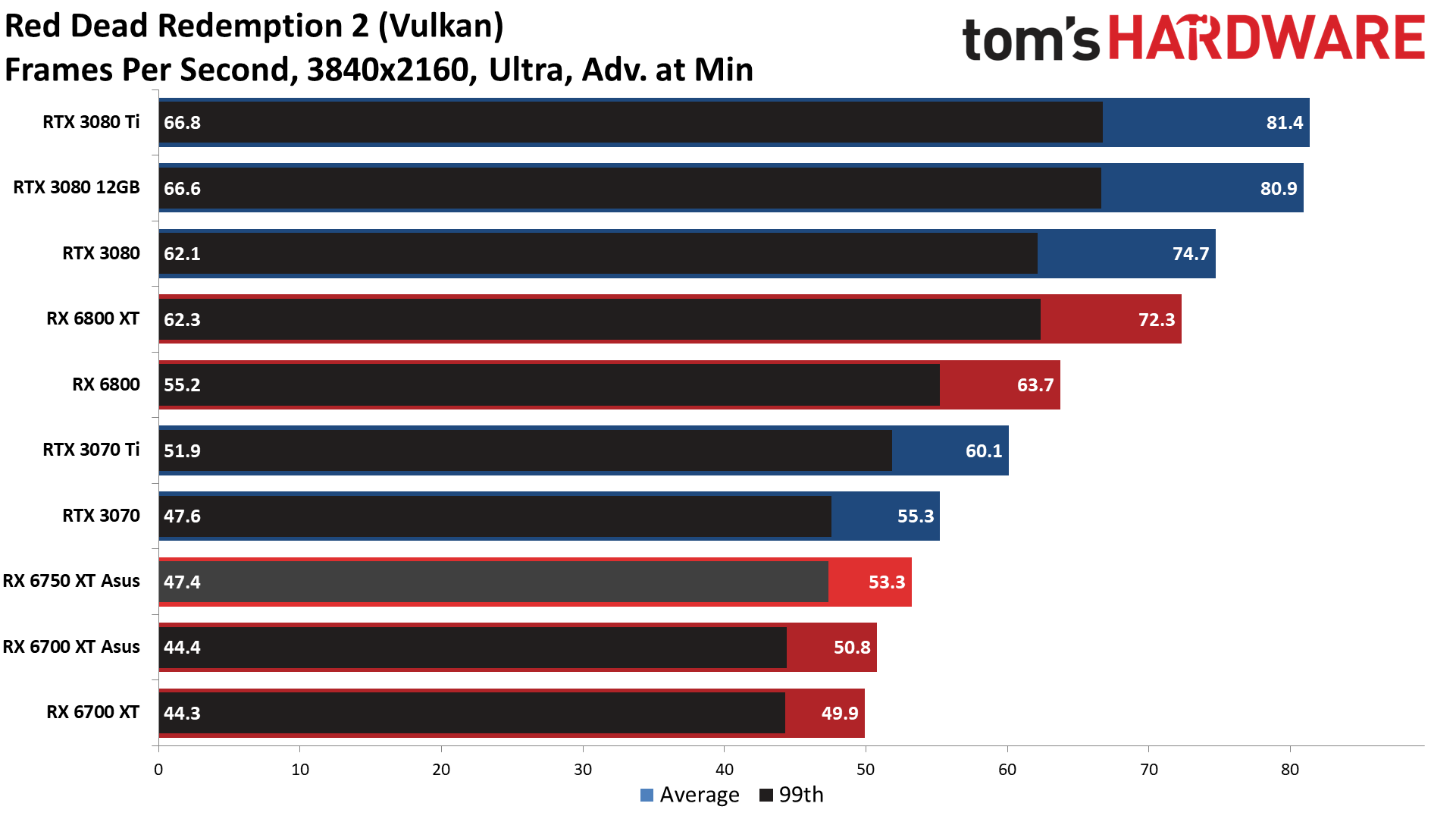
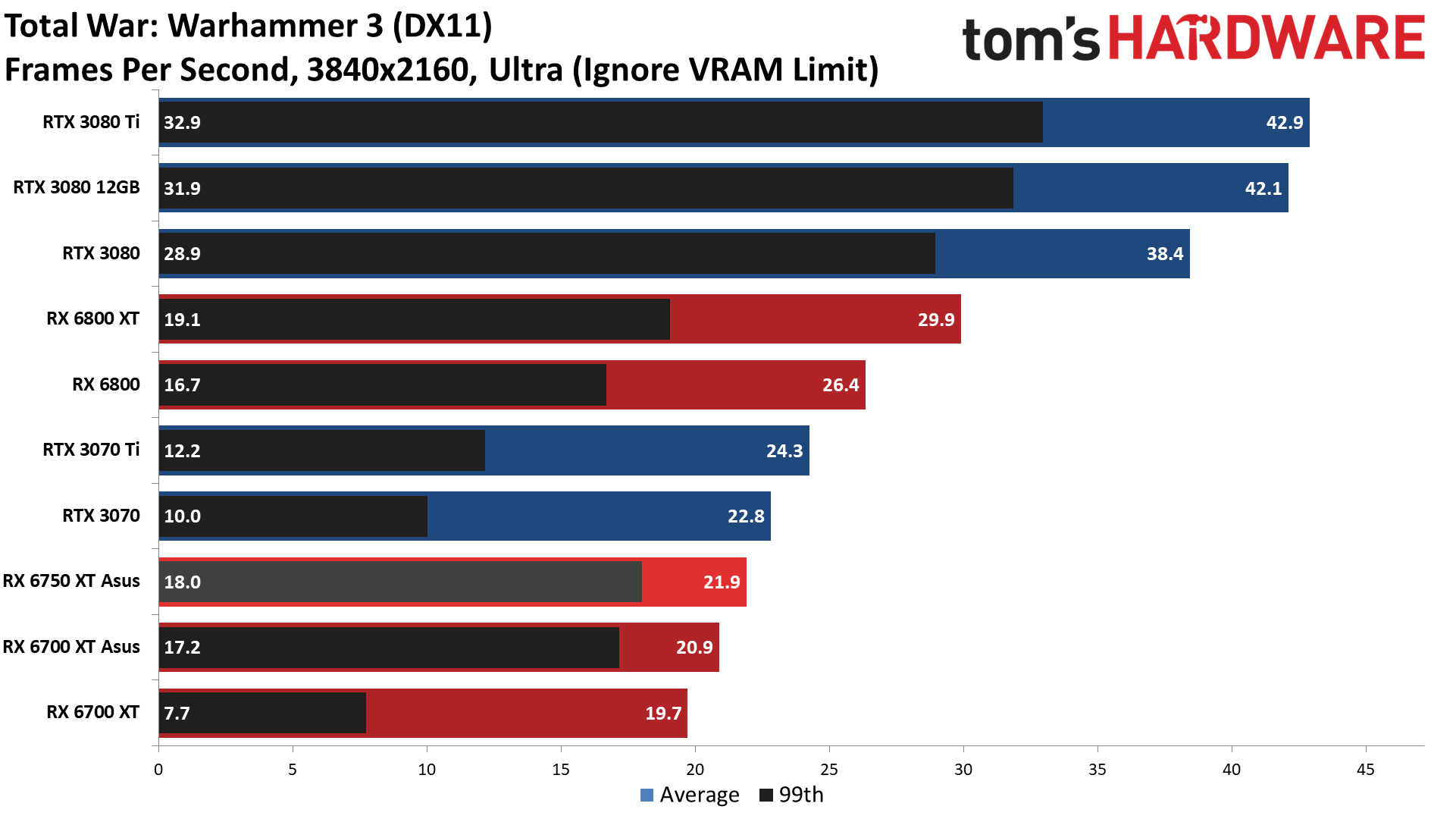
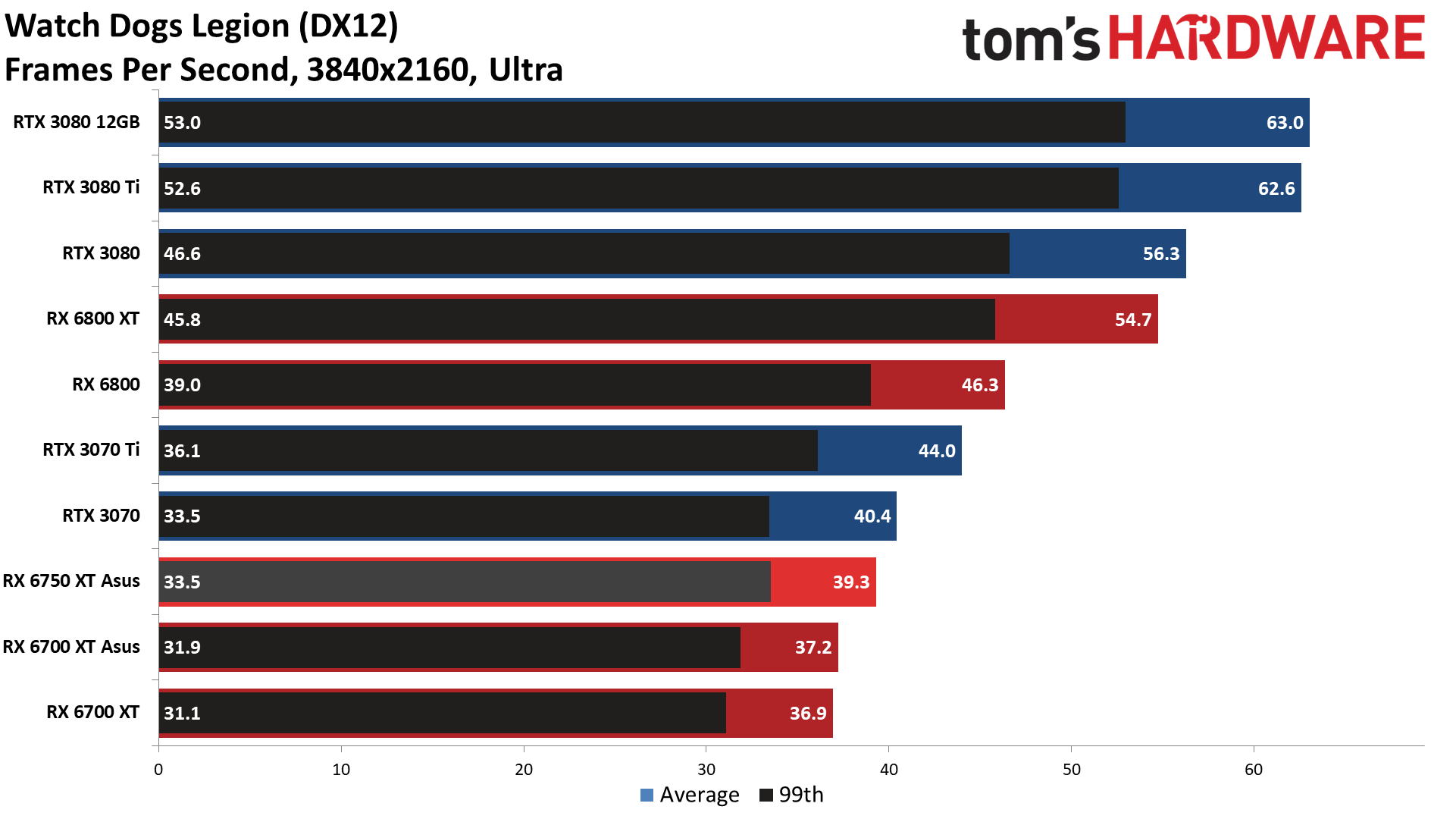
Ray tracing is obviously out of the question at 4K, so we're only looking at standard gaming performance. With 45 fps across our test suite, the 6750 XT delivered playable results, with Warhammer 3 being the only game to come up well short of the 30 fps mark. Forza Horizon 5 also nearly averaged 60 fps, but 4K doesn't do AMD's Infinity Cache any favors, and nearly every game now ran equal to or faster than the 6750 XT on Nvidia's competing RTX 3070. There's not much to add, with performance mostly mirroring what we saw at 1440p, just with much lower framerates.
If you're serious about taking on 4K gaming, you can use RSR — Radeon Super Resolution — to apply a universal upscaling algorithm to all games. It's comparable to NIS (Nvidia Image Sharpening), and while it generally doesn't look as good as native, upscaling 1440p to 4K delivers a far better experience on these high-end GPUs than trying to do 4K native. RSR is also relatively lightweight, meaning upscaling 1440p to 4K only ends up being a few percent slower than running 1440p, and some may find the resulting output to be more pleasing than native 1440p (especially on a 4K display).
FSR or DLSS still result in better upscaling quality in general, just because those require game integration and can render the HUD and text at native resolution and only apply upscaling to areas of the game where a few artifacts won't be as noticeable. But FSR and DLSS require work on the part of the game developers, whereas RSR and NIS are a cheap and "free" solutions for virtually all games.
- MORE: Best Graphics Cards
- MORE: GPU Benchmarks and Hierarchy
- MORE: All Graphics Content
Get Tom's Hardware's best news and in-depth reviews, straight to your inbox.
Current page: Asus Radeon RX 6750 XT: 4K Gaming Performance
Prev Page Asus Radeon RX 6750 XT: 1080p Gaming Performance Next Page Asus Radeon RX 6750 XT: Power, Temps, Noise, Etc.
Jarred Walton is a senior editor at Tom's Hardware focusing on everything GPU. He has been working as a tech journalist since 2004, writing for AnandTech, Maximum PC, and PC Gamer. From the first S3 Virge '3D decelerators' to today's GPUs, Jarred keeps up with all the latest graphics trends and is the one to ask about game performance.
-
tennis2 My brother has the 3060Ti with this same cooler. It. is. CHONKY. Sooo overkill for this class of card is gloriously hilarious.Reply
They're using the same cooler all the way through their 3090. -
JarredWaltonGPU Reply
Yeah. The annoying thing to me is that Asus doesn't seem to do much with all the cooling headroom. Surely the 6750 XT can clock higher than this without any issue? Efficiency be damned, bump those clocks and voltages and give me 3GHz!tennis2 said:My brother has the 3060Ti with this same cooler. It. is. CHONKY. Sooo overkill for this class of card is gloriously hilarious.
They're using the same cooler all the way through their 3090. -
hotaru.hino Surely staying under 60C with Furmark running on air must amount to something :tonguewink:Reply
Like I get the idea of recycling designs because it means less variations and whatever, but at some point you have to make something different. Lest we see this on a GTX 1630. -
tennis2 Reply
I'd say that falls on the side of "user risk" rather than something Asus would want to cover with a warranty. With this cooler and card, you've certainly got the tools.JarredWaltonGPU said:Surely the 6750 XT can clock higher than this without any issue? Efficiency be damned, bump those clocks and voltages and give me 3GHz! -
tennis2 Reply
The Strix 3050 and 3060 is basically the same cooler, but with 5 heatpipes.hotaru.hino said:Like I get the idea of recycling designs because it means less variations and whatever, but at some point you have to make something different. Lest we see this on a GTX 1630.
Strix 3090 for reference (exact same as the 3060Ti/6700XT on up):
-
Sleepy_Hollowed I mean.... if it's the only thing you can buy, I guess it's nice, but for that price if there's other options, nah.Reply
That is one killer cooling solution though, and I do like they reuse it, though it looks like a tank.
